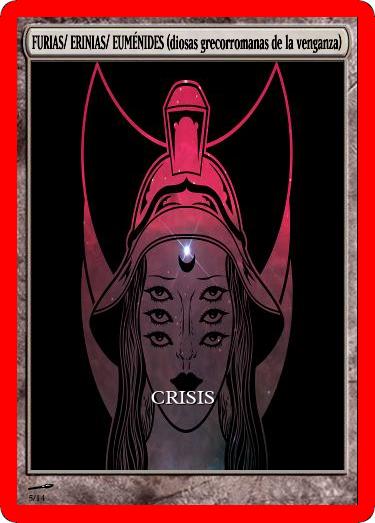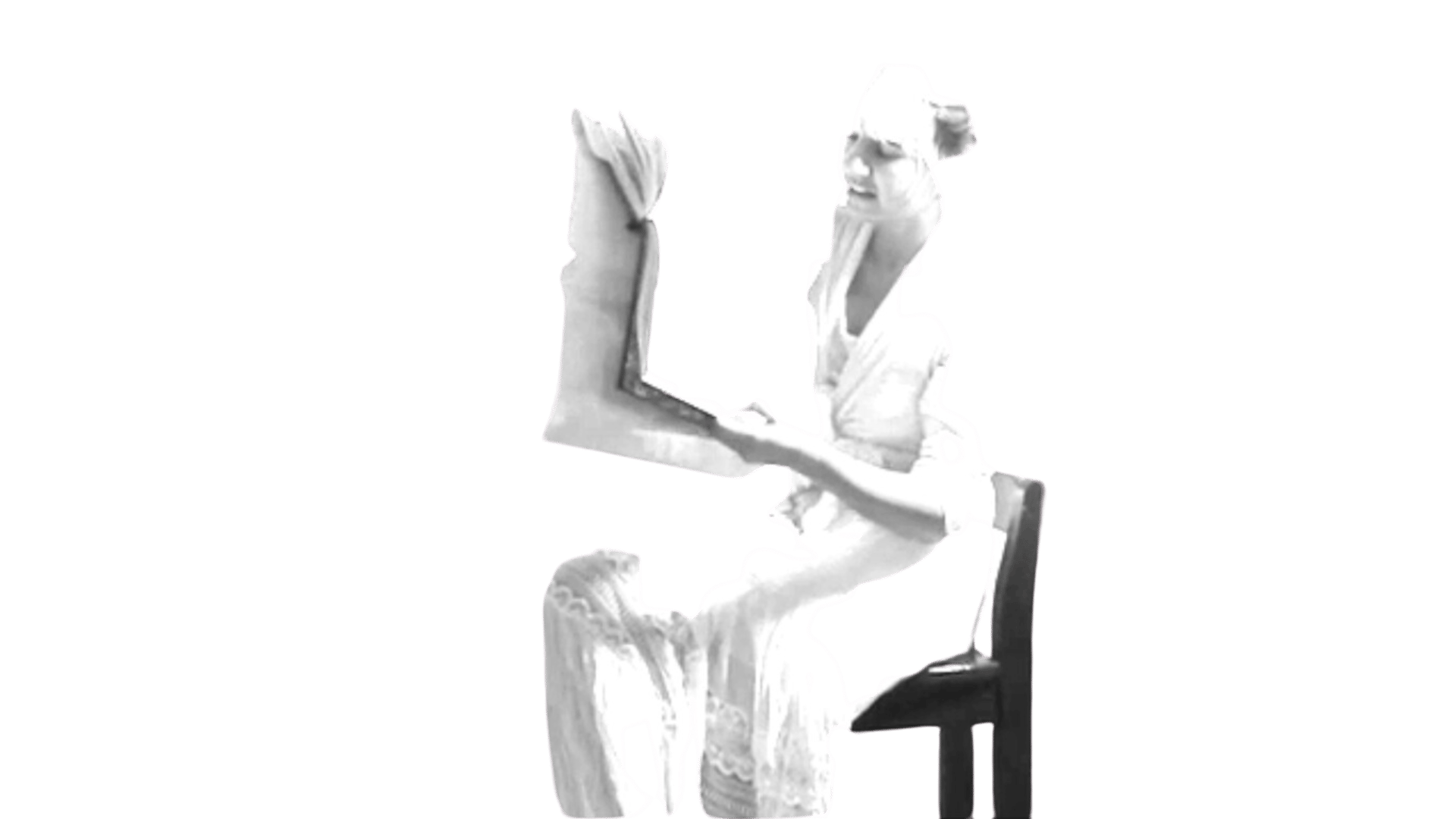PRIESTESS: From "sacer-" (sacred) and the Indo-European root "dhê" (to do); she is in charge of doing sacred things.


The concept of crisis resonates in diverse spheres of human experience, frequently evoking feelings of turmoil, urgency, and transformation. It is during a crisis that latent tensions surface, revealing deeper conflicts and anxieties that may have been hidden beneath the surface. The word “crisis” comes from the Greek word krisis, meaning a turning point, a moment of decision that leads to significant change.
In ancient Greek mythology, crises were not merely abstract concepts; they were personified by powerful divine figures. Among these figures are the Furies, known in Greek as the Erinyes, or later as the Eumenides—“the benevolent ones.” These deities embody the moral and emotional chaos that arises from unresolved guilt, revenge, and the search for justice. Their role in mythology encapsulates the very essence of crisis as it manifests in human affairs, showing how unresolved conflicts can transform into destructive forces.
The Furies were originally conceived as vengeful spirits, born from the blood of the earth when Uranus was castrated by his son Cronus. Their existence in Greek mythological tales reminds us that every action has consequences and that justice must be restored in the face of wrongdoing. They are often depicted as relentless pursuers of those who commit heinous acts, absolutely righteous in their mission, but also capable of provoking deep fear and anxiety.
In a contemporary context, the Furies symbolize the emotional weight that crises carry—a reflection of collective grief, anger, and the yearning for reparation. Whether through personal conflict, social upheaval, or political disorder, crises catalyze familiar human responses, encapsulated by the Furies' chaotic nature. These deities illustrate the struggle between accountability and absolution, reminding us that the path to resolution often requires confronting internal chaos.
The relationship between crisis and Furies is further emphasized in the story of Orestes, one of the most celebrated tales involving these goddesses. Orestes, driven by a sense of duty and obligation, avenges his father's murder by killing his mother, Clytemnestra. This act unleashes the wrath of the Furies, who relentlessly pursue him. His journey reflects a crisis of morality, identity, and consequences, highlighting the cyclical nature of violence and retribution—a contemporary echo that remains in today's society.
In the narrative, Orestes ultimately seeks purification and redemption. His trial in Athens symbolizes the transition from vengeance to justice, where the Furies transform into Eumenides. This metamorphosis highlights the possibility of resolution emerging from crisis, underscoring that although the Furies represent chaos and retribution, they also open the way to understanding and healing. This change signifies the importance of facing ethical dilemmas courageously and seeking harmony even after conflict.
Furthermore, this transformation can be interpreted as representative of the psychological journey a person may undergo during a crisis. Initially gripped by fear and anger, the individual may awaken to a broader understanding of their circumstances—a realization that, although pain and suffering are inherent to life, resolution lies in addressing these elements rather than avoiding them. The chaos brought about by the Furies can ultimately lead to new clarity and peace.
On a societal level, the presence of a crisis often gives rise to movements for justice and reform. The social equivalent of the Furies can be seen in activists and reformers who call attention to injustices, demanding accountability and change. They reflect the unyielding spirit of the Furies, appealing to the collective conscience to confront its wrongs. However, like the Furies, they can also provoke fear and resistance in those who refuse to confront their actions.
The duality present in the Furies—as agents of both punishment and possible justice—reflects the dual nature of crises themselves. A crisis has the potential to destroy, yes, but it also holds the opportunity to rebuild and redefine. By facing chaos, individuals and societies can identify the essential issues that require attention and strive for resolutions that promote healing.
In literature, art and psychology, the understanding of the crisis through the prism of Furies resonates with human experience. His narrative prompts us to examine our emotional responses and our social structures, encouraging us to face our fears and challenges head on. Addressing themes such as guilt, revenge and transformation opens paths towards a greater understanding of those places where we can feel overwhelmed or powerless.
In conclusion, the concept of crisis is deeply interwoven in the narratives of the Furies, illustrating the deep connections between human emotion, social justice and the need for resolution. The Furies, with their relentless pursuit of revenge, stand as symbols of the chaotic nature of crises, reminding us that the path through turmoil usually leads to a deeper understanding of ourselves and our shared humanity. His evolution towards the Eumenides encapsulates the journey we all go through in times of crisis: a transition from chaos to clarity, from revenge to justice, underscoring the importance of confronting and embracing the whirlwind of emotions that these moments reveal. By recognizing the Furies, we encourage growth, seek justice after the crisis and cultivate a renewed sense of peace.

MAGA
WE WELCOME YOU TO THIS INITIATIC TEMPLE, where the transcendent rests on the heart, like a bird singing from the nest of its tree. You are a practitioner of a FORGOTTEN SACRED ART, like the oxygen of a tree that recites its verses in the atmosphere of a forest.
Here you will find some COMPASSES and MAPS to navigate this great ADVENTURE of CONSCIOUSNESS.
Thank you for being here! YOUR IMAGINATION IS A SPACESHIP, and with it we travel to the confines of the universe.
EXPERIENTIAL POETICS
maga@sacerdotisa.org
© 2024. All rights reserved.
